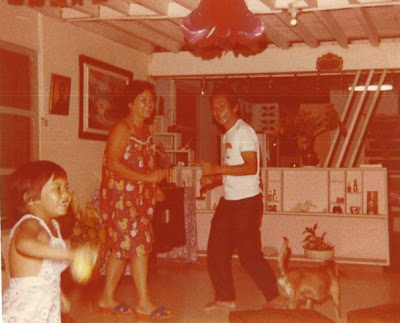Farewell, Tony.
Melanie noticed that Anthony Bourdain, “bad boy” chef-turned-TV personality, was sitting at the bar at Incanto, having a drink. I swallowed my food and took a big swig from my wine glass, steeling myself to go up to him – to say what? I stood up, ready to get my fangirl on.
My knees buckled. I sat back down, nailed to my chair, frozen in fear. I couldn’t do it.
I found myself in a familiar, albeit more successful, situation years before: I met Tony once before in Santa Cruz at a book signing for his book “No Reservations: Around the World on an Empty Stomach.” When it was my turn, I thanked him and told him how much I admired his work – that his approach to his food and travel show was so respectful of the host culture, unlike the gawky spectacle of other shows of that ilk. And then I told him that he needed to go to the Philippines and do an episode there.
“Where should I go?” he asked.
“Pampanga. That’s where my dad’s from, and they’re known for being really good cooks in that region.”
“Done.”
Shortly thereafter, the Philippines “No Reservations” episode aired. I like to think – and this is a constant joke I make with my friends – that I had something to do with that and that my name got left off the end credits due to some clerical error. But, knowing how video production work goes, the show was probably already filmed by the time we met. A girl could dream.
I’ve been a fan of Bourdain and his work from his early days on the Travel Channel and his novel, “Kitchen Confidential.” (In the spirit of being a true fan, I dived into his mystery novels, not enjoying them as much, alas.) And throughout the years I’ve seen him evolve from a traveling gourmand with searing wit and I-don’t-give-a-fuck attitude to a more worldly, mature, astute and compassionate observer of the world.
In 2013, he joined CNN. My boy *made* it. He was running in the big leagues now. My boy from the culinary underbelly was now front and center on one of the premier mainstream media outlets in the world, and I couldn’t have felt prouder. With the force of CNN behind him, over time his shows transcended from the prurient “watch me eat this cow anus” of his early days to bringing us along as he developed a richer, more informed, textural and complex understanding of the places and the people he visited. And, most importantly, he showed us how each and every one of us all over the globe have more in common than we think we do. The food, while still a presence, took a back seat to a visual feast of imagery and deft and thoughtful storytelling.
I’ve often gauged the greatness of each of his episodes if, after watching, I felt the immediate need to visit the country or city profiled (I’m looking at you, Senegal, Vietnam, Iran, Hong Kong). But it’s when he revisited the Philippines in the Season 7 premiere where my love for him entered into a new realm. In his storytelling of the overseas Filipino workers (OFWs), he bore witness to a force that many Filipinos have lived with for decades, but – because we don’t talk about our problems in public – never really saw the light of day. Talk to any Filipino and they’ll tell you about their parent, their child, their aunt, their uncle, their cousin, their brother or their sister working overseas to make a living. Imagine the pain, the heartbreak, the void that comes from being separated from your family, from your friends, from your community, all in the name of a last-ditch effort to provide for your family when your prospects at home look bleak or nonexistent. Imagine how many families are torn apart by this.









